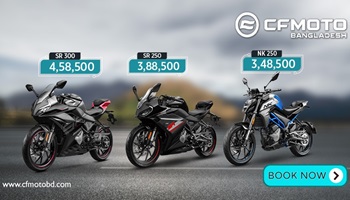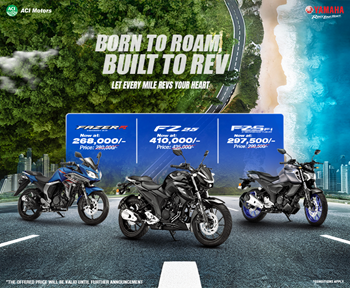What is the Transmission on a Motorcycle?
The transmission on a bike is the mechanism that translates the engine-produced raw force into the wheels’ motion. It’s an essential mechanism for the functioning of a motorcycle. What is the Transmission on a bike or motorcycle? We will learn this mechanism in detail with its functioning, parts, types, facilities, and problems.
What is the Transmission on a Motorcycle?
The transmission is the process or mechanism that transfers the power from the engine to the motion of the wheels. On the other hand, a motorcycle transmission is created for the bike applications. It lets the engine operate independently of the wheels. It also keeps the RPM at an optimal range and thus increases efficiency.
What are the Parts of a Motorcycle Transmission?
This is one of the FAQs on the internet. Let’s find out the bike components related to the motorcycle components.
Main Shaft: You may know it as the input shaft. This component transmits power from the engine to the gears. It is responsible for estimating the rotational speed of the gears.
Counter Shaft: It has got connection with the aforementioned main shaft. The countershaft rotates at different speeds. It has an impact on the final output velocity of the bike as it approves the reduction of the gear.
Bearing: Being placed within the system, it assists rotating shafts. It also helps to decrease the friction. Very much essential for the smooth operation of the system as well as its longevity.
Gears: Comes with a variety of types. Those include the kinds of fixed, freewheeling, as well as slider. The first-mentioned ones have a direct connection with the shaft. The next one spins independently meanwhile the latest one engages or disengages based on the requirement.
Shift Drum: It’s indeed a cylindrical component. This element offers precise engagement of the gear while also influencing the movement of shift forks.
Shift Fork: It moves gears along the shaft. The shift fork allows the users to shift between various gears without any obstacles.
Shift Linkage: Features the mechanical components that attach the shift lever to the shift drum. Thus it plays a vital role in the shifting of the gears.
Chains: Responsible for transferring power from the transmission to the rear wheel. Thus it’s one of the major components of the mechanism.
Drive Belts: In some of the bikes, you may see the drive belts instead of the chains. Almost do the same job as the chains but the operation is quieter and also needs less amount of maintenance than the chains.
Sprockets: You see these toothed wheels in the chain system. So what role do the sprockets play in the transmission? They transform the rotary motion of the transmission into the linear motion of the wheels.
How Does A Motorcycle Transmission Work?
How does bike transmission work? Let’s know the whole process.
- In the very first step, the clutch yields the power generated by the engine to the main shaft of the transmission.
- The main shaft keeps rotating and at the very same speed, the fixed gear also spins.
- Meanwhile, a freewheeling gear is there which has an attachment to the fixed gear.
- Slider gear enables the countershaft spin thanks to its engagement with the freewheeling gear.
- There is a component named the left-foot gear lever. The rider uses this element to up the gear or down it.
- It has a linkage to a shifter shaft. On the other hand, the ratchet mechanism has a connection with the shifter shaft.
- The latest-mentioned mechanism being activated enables the drum to rotate.
- The channeling and movement of the gear is made sure by the Shift forks with pins.
- In the adjacent sprockets’ recesses, there are some fitted pin gears.
- In the latest step, sliding neighboring gears unite them together and they rotate as one unit.
What Type of Transmission is in a Motorcycle?
There are various types of transmission you may find in the motorcycles. Are motorcycles manual or automatic transmissions? Actually, both are available on different bikes.
Manual Motorcycle Transmission
Regular bikers are fond of this system. Enables the riders to manually pick and change gears. They can use a movable gear selector or a hand-driven clutch. They feel the luxury of shifting, upping, and downing the gears as per their choices & demands.
Semi-Automatic Motorcycle Transmission
In this system, the user manually shifts the gear but they don’t need to use or engage the clutch by themselves. Instead, there is a mechanism of automated clutch operation. So, there is the easiness of automatic shifting as well as some priority-based controlling left.
Automatic Motorcycle Transmission
In this mechanism, the bike automatically shifts between gears. There is no visible signal during this process. However, it still requires a clutch to assist the engine during idle or manual reversing. Bikers don’t like this system much, to be honest.
How to tell if a Motorcycle is Automatic or Manual?
The manual ones feature a gear selector pedal as well as a clutch lever. You can find the pedal on the left side in the front of the footrest. On the other hand, the clutch lever is positioned on the left handlebar. In the automatic system, the user doesn’t have much to do. He is only required to turn the throttle and release the brake. Some modern bikes appear with a “Dual Clutch System” featuring a two-clutch system. Indeed, a built-in computer takes the responsibility to shift the gears.
What are the Advantages of Manual?
The conveniences one enjoys with a manual transmission system are as follows:
- They offer better acceleration than their counterparts.
- Presents a simple gearbox design and hence needs fewer parts.
- If you understand the gear shifting properly, it will gift you with better fuel efficiency.
- Riders also like this system as it enables them to reach a higher speed very quickly.
- This option is available on most bikes with more people preferring it.
What are the Disadvantages of a Manual Transmission?
There are a few drawbacks to the manual transmission system. You may suffer the following obstacles.
- It takes much more energy with a lot of involvement. Thus it may make the user more tired and offer challenging scenarios for longer continuous riding. In busy traffic conditions. riders may feel really restless with the constant shifting of gears.
- The riders require time to own this mechanism. It takes more time to gain the skills.
- With improper changing of the gears, the bike may stop. It may consume some more petrol as well.
What are the Benefits of Driving an Automatic Transmission?
Now let’s check out the pros of an automatic transmission on your bike.
- It’s easier to learn and hence helpful for new & inexperienced riders.
- Provides you the benefit of focusing more on the road. Because the user doesn’t need to focus much on shifting gears.
- The automated gear-changing system offers an easy & smooth shifting of the gears.
- Most useful for busy traffic conditions. Because it offers you the privilege of not requiring to shift the gears constantly.
- With such a system, your bike will slow down faster & stop quickly than the manual transmission system.
What is the Problem of Automatic Transmission?
You may ask, What are the disadvantages of automatic transmission? Here is the list.
- Comes with a higher sticker price.
- They feature more parts than the manual transmission and also have a complex gearbox design.
- The maintenance cost is also higher for this system.
- Also has a higher fuel consumption relatively and thus the petrol cost is also higher.
Is an Automatic Transmission Better than a Manual?
Let us clear you. If you do a lot of city riding, then there must be heavy traffic. And obviously much more start-stop conditions. All these indicate more gear shifting. Thus, for such riding, the automatic transmission is the better option. It lets you have a more relaxed ride. Moreover, if you are not a skillful rider, then the automatic system will assist you.
By the way, if you are a pro player or at least a good enough rider, and if you go on longer rides through highways or through roads where there is less start-stop, then the manual transmission should be your pick. Moreover, the riders who prioritize performance, do go for the manual transmission.
Overall, both systems have their own pros and cons. One suits congested areas and also assists amateur riders. The other is better for performance and cost-effectiveness. By the way, manual transmission is more popular among the bikers.























